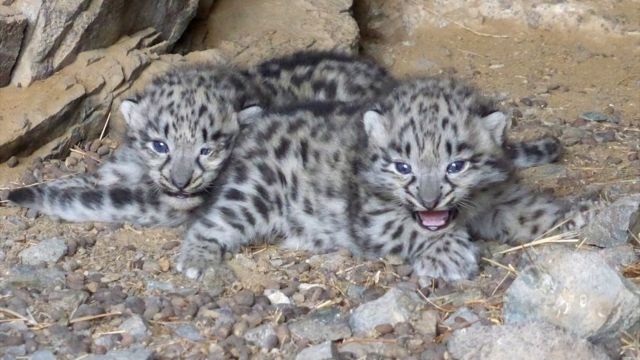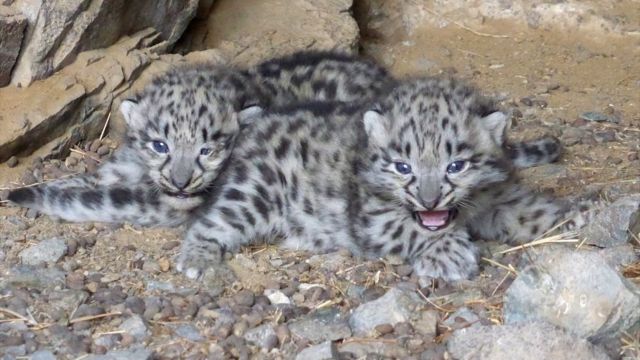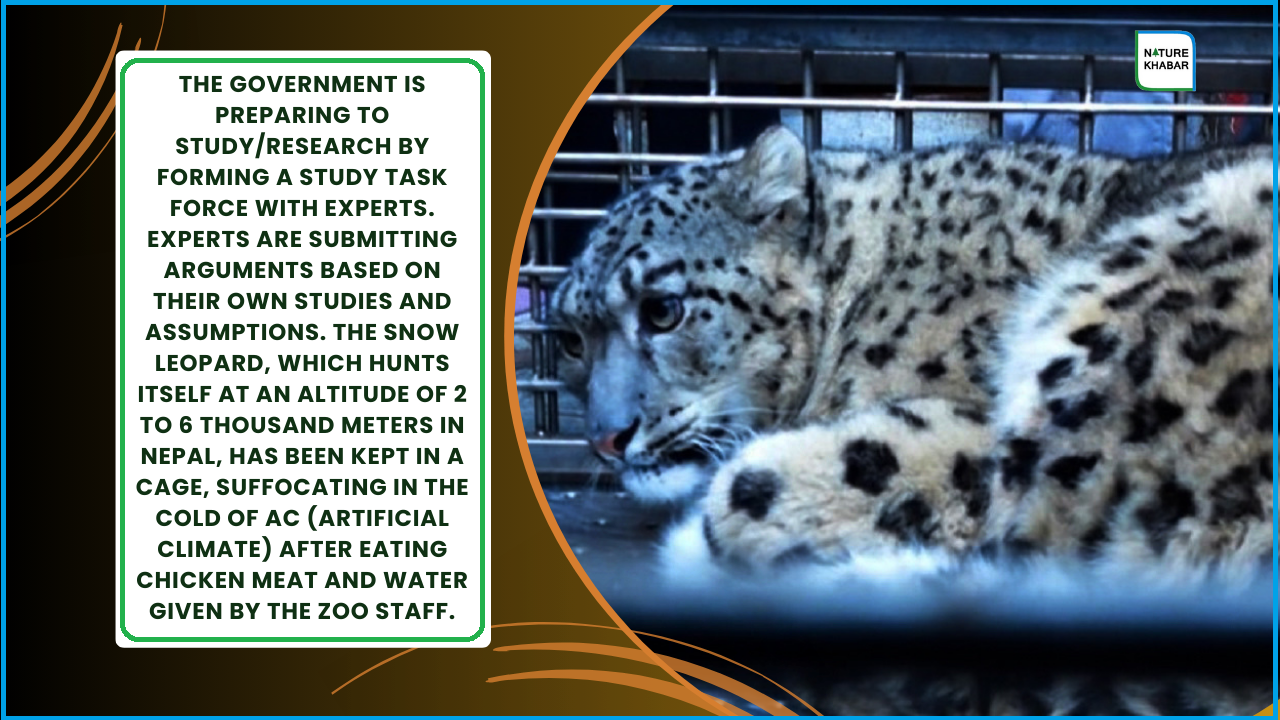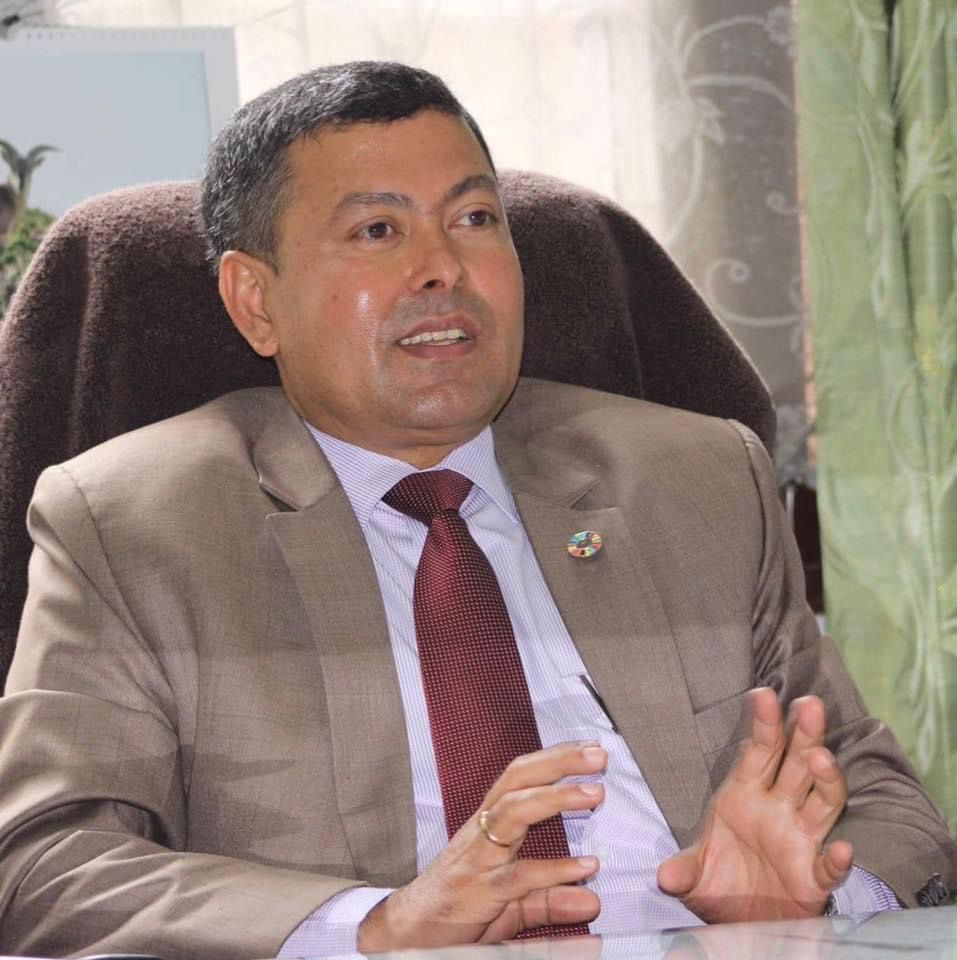Scientists split over snow leopard status
- Navin Singh Khadka


Scientists are deeply divided on whether snow leopards are still endangered species, a BBC investigation has found.
Some big cat exerts say their population has stabilised and increased in a number of places.
This, they claim, has slowed the overall rate of decline.
Others argue that there has been no robust scientific study to prove either that the population has stabilised.
Amid the disagreement, top officials from 12 countries within the snow leopard range are meeting in Kyrgyzstan to further strengthen conservation of the elusive big cats.
The differences of opinion among scientists have intensified as a downgrading of the threat to snow leopards - from "endangered" to "vulnerable" - is expected from the IUCN Red List soon.
The Red List is the most comprehensive inventory of the conservation status of different species.
The list maintained by the international nature conservation body is the world's most comprehensive inventory of the status of biological species.
Scientists who believe that the number of snow leopards has gone up say the information is based on people working in the field.
"Experts from each range countries were asked to come up with best estimates of snow leopard population by country and the total was between 7,400 and 8,000 animals," says Dr Tom McCarthy, snow leopard program executive director for Panthera, the global wild cat conservation organisation.

"You have to stress there that's still what people call guesstimates, I like to call it a very educated guesstimate."
The figures have been quoted by a recently published book on snow leopards that kicked off the debate.
Before these latest figures, the widely quoted population for snow leopards since the 90s was between 3,500 and 7,500.
"But I just can't see why we would cling to the figure of the 90s," said Dr McCarthy.
Conservationists say snow leopards have been threatened by poaching, retaliatory killing by farmers, declining prey species, shrinking habitats, and climate change.
"Although it is difficult to capture an overall trend, there is a general lack of evidence of a significant continuing decline in the global snow leopard population," David P Mallon and Rodney Jackson, both veterans on snow leopards, wrote in the journal Oryx recently.
But some scientists are critical of that conclusion.
"[For that conclusion] less than 2% of the global snow leopard range has been sampled using scientifically acceptable techniques, such as camera-trapping and genetics," says associate professor Guillaume Chapron, with the Swedish University of Agricultural Sciences.

"And those 2% have been surveyed because there was an a priori expectation that this would be good snow leopard habitat.
"This is not a proper scientific reasoning. You do not choose a method based on the results it gives."
Experts say habitat range for snow leopards extends over nearly two million square kilometres, involving 12 countries in central and northern Asia including the Himalayan ranges.
These are places with tough topography that helps snow leopards remain elusive.
This is why some scientists call them "cryptic wide-ranging species that are almost impossible to count - and therefore their population needs to be estimated".
But they also admit that there is a danger of misrepresenting the true numbers through this type of estimation.
This, they say, became evident in recent scientific surveys based on camera trapping and genetic tests on faeces in Nepal and Pakistan, where fewer snow leopards were found than expected.
"This illustrated the dangers of this population size estimation technique of extrapolating from known surveyed areas (a very small part of snow leopard range) to the rest of suitable snow leopard habitat where they may or may not be present," said a big cat species expert, who did not want to be named.
Professor Som Ale, a snow leopard expert who teaches at the University of Illinois in Chicago, commented: "Imagine the fate of a species such as the tiger or rhino or hawksbill turtle - a widespread victim of poaching and illegal trade - if the IUCN were to down-list species, across the world, based on population estimates largely based on interviews and expert opinions (from conferences)."
Experts knowledgeable about the IUCN categorisation process, however, said the possible down-listing of the threat category for snow leopards is happening mainly because of a change in criteria.
The new provision requires either the adult snow leopard population to be below 2,500 or to have experienced a rate of decline exceeding 20% over 16 years for the species to be categorised as "endangered".
Sources told the BBC that the IUCN assessment has found this is not the case.
Scientists have also differed on the first age of reproduction and sexual maturity age for snow leopards.
That difference led to a stalemate over re-assessing the IUCN Red List status of the top mountain predator since it was designated as "endangered" in 2008.
Those arguing for the continuity of endangered status say down-listing snow leopards to vulnerable category could dry funding and push the species to extinction.
"An immediate impact of down-listing snow leopard may be that the range country governments and conservation entities would de-emphasise (whatever little extant) conservation efforts they have on the ground to other perceived (lesser) conservation needs," said Professor Ale.
Scientists in the other camp believe that a down-listing is a positive development and will motivate donor governments to continue funding - including for snow leopards - as they will see that conservation efforts do work.
"Snow leopards are still very, very threatened with extinction, we cannot let up our conservation efforts," said Dr McCarthy.
Source: BBC





Feedback